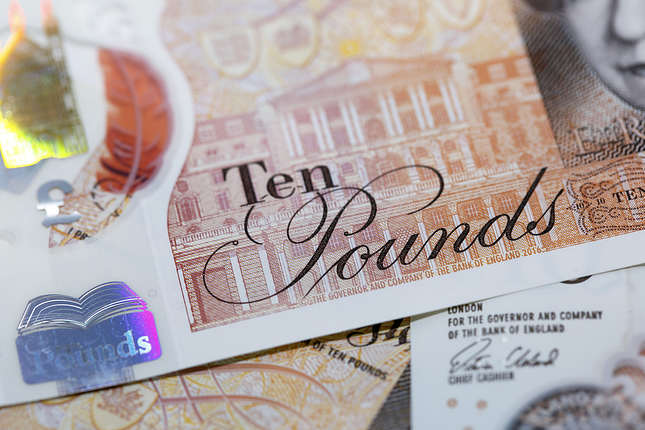- Inflation is seen dropping sharply across the Euro area economies in March.
- ECB dropped its rate hike guidance in March. Chief Lagarde said no trade-off between price and financial stability.
- ECB is set to hike rates by 25 bps in May as it is determined to tame inflation.
“There is no trade-off between price and financial stability,” European Central Bank (ECB) President Christine Lagarde said earlier this month, following the announcement of a 50 basis points (bps) rate hike despite the banking sector turmoil.
With that in mind, investors gear up for the preliminary estimate of the March Harmonised Index of Consumer Prices (HICP) data across the euro area economies. Spanish and German inflation data will be reported on Thursday, followed by the French and Eurozone HICP prints on Friday.
Falling EU inflation but not yet a peak
In February, French, Spanish and German inflation data accelerated across the time horizon. French Consumer Prices Index (CPI) unexpectedly rose 7.2% in the year to February, hitting the highest level since the Euro was launched in 1999. Spanish Consumer Price Index in February also surprised to the upside, arriving at 6.1%, up from January’s 5.9%. Germany’s annual HICP for February rose by 9.3%, beating 9.0% estimates and a 9.2% increase seen in January.
Meanwhile, the annualized Eurozone HICP softened a bit to 8.5% in February vs. January’s 8.6% and the expected 8.2% clip. The core HICP, however, climbed to 5.6% YoY in February, hitting record highs. Services prices drove a big pickup in core inflation, which lead the European Central Bank to stick with its planned 50 bps rate hike this month.
As the ECB emphasized its data-dependent stance and abandoned rate hike guidance at its March meeting, the central bank will closely scrutinize the March HICP readings in the eurozone’s largest members, including Germany, France and Spain, for its policy move in May. Spanish annualized HICP is seen lower at 4.3% in March while the German gauge is expected to drop to 7.5% YoY in the reported period. The March inflation in France is also likely to soften to 6.5% annually.
The flash estimate for Eurozone is likely to decelerate to 7.2% YoY in March while the annualized Core HICP is seen a tad higher at 5.7%. The expected decline in inflation across the euro area economies in March is mainly due to the base effects, in the wake of a spike in oil prices in March 2022 due to the Russia-Ukraine war. However, higher global agricultural commodities prices and elevated food inflation will continue to pose upside risks to the overall inflation, watering down expectations of peak inflation. Further, sticky Core HICP reading from the bloc could also keep the ECB on track in its fight to curb inflation.
Amidst the recent banking sector debacle and tightening financial market conditions, there is increased downside risks to the euro area inflation outlook in the coming months. However, Lagarde was clear that the ECB’s mandate to bring inflation back to the 2% target isn’t clouded by the financial risks.
EUR/USD implications
Easing price pressures in Spain, Germany and France will clearly indicate inflation softening in the Eurozone. Therefore, the HICP data releases in these economies will likely trigger a bigger reaction for the EUR/USD pair than on the overall Eurozone inflation print.
In case of bigger-than-expected falls in euro area inflation, traders will be convinced that it could be the last ECB rate hike in May before the central bank adopts a wait-and-see approach. This scenario would render Euro negative.
On the other hand, an unexpected acceleration in inflation in some of the largest euro area economies combined with sticky Core CPI, could keep the ECB on its rate hike trajectory, implying that they are far from seeing peak inflation. The EUR/USD recovery could strengthen on hot euro area inflation readings.
Information on these pages contains forward-looking statements that involve risks and uncertainties. Markets and instruments profiled on this page are for informational purposes only and should not in any way come across as a recommendation to buy or sell in these assets. You should do your own thorough research before making any investment decisions. FXStreet does not in any way guarantee that this information is free from mistakes, errors, or material misstatements. It also does not guarantee that this information is of a timely nature. Investing in Open Markets involves a great deal of risk, including the loss of all or a portion of your investment, as well as emotional distress. All risks, losses and costs associated with investing, including total loss of principal, are your responsibility. The views and opinions expressed in this article are those of the authors and do not necessarily reflect the official policy or position of FXStreet nor its advertisers. The author will not be held responsible for information that is found at the end of links posted on this page.
If not otherwise explicitly mentioned in the body of the article, at the time of writing, the author has no position in any stock mentioned in this article and no business relationship with any company mentioned. The author has not received compensation for writing this article, other than from FXStreet.
FXStreet and the author do not provide personalized recommendations. The author makes no representations as to the accuracy, completeness, or suitability of this information. FXStreet and the author will not be liable for any errors, omissions or any losses, injuries or damages arising from this information and its display or use. Errors and omissions excepted.
The author and FXStreet are not registered investment advisors and nothing in this article is intended to be investment advice.
Recommended Content
Editors’ Picks

GBP/USD struggles around 1.2600 after BoE rate decision
GBP/USD retreated from its daily peak and battles around 1.2600 following the Bank of England monetary policy decision. The BoE kept the benchmark interest rate unchanged at 4.75% as expected, but the accompanying statement leaned to dovish. Three out of nine MPC members opted for a cut.

EUR/USD retakes 1.0400 amid the post-Fed recovery
EUR/USD is recovering ground to near 1.0400 in the European session on Thursday. The pair corrects higher, reversing the hawkish Fed rate cut-led losses. Meanwhile, the US Dollar takes a breather ahead of US data releases.

Gold price recovers from one-month low, retains modest gains above $2,600
Gold price attracts some haven flows in the wake of the post-FOMC sell-off in the equity markets. The Fed’s hawkish outlook lifts US bond yields and provides near-term support to XAU/USD. Market players await US GDP and employment-related data.

Aave Price Forecast: Poised for double-digit correction as holders book profit
Aave (AAVE) price hovers around $343 on Thursday after correcting more than 6% this week. The recent downturn has led to $5.13 million in total liquidations, 84% of which were from long positions.

Fed-ECB: 2025, the great decoupling?
The year 2024 was marked by further progress in disinflation in both the United States and the Eurozone, sufficient to pave the way for rate cuts. The Fed and the ECB did not quite follow the same timetable and tempo, but by the end of the year, the cumulative size of their rate cuts is the same: 100 basis points.

Best Forex Brokers with Low Spreads
VERIFIED Low spreads are crucial for reducing trading costs. Explore top Forex brokers offering competitive spreads and high leverage. Compare options for EUR/USD, GBP/USD, USD/JPY, and Gold.